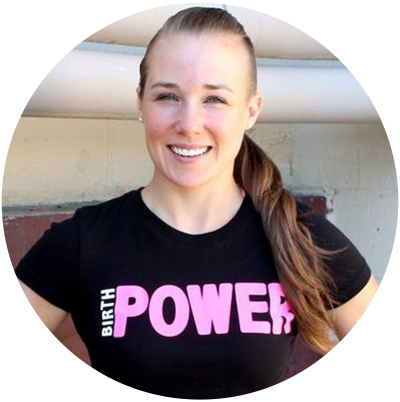
With Expert Colleen Flaherty from PROKREATE
In birth, and in motherhood, a woman’s body may move in “outside the fitness norm” or awkward ways to accommodate the child. That’s why movement during pregnancy must replicate these experiences so that the body and the mind are prepared.
During pregnancy, it’s important that a woman’s body train through various ranges of motions to strengthen not only big muscle groups, but the small ones as well. As the hormone Relaxin relaxes ligaments, it relies more on muscles to give support to the structure. This is why movement through multiple planes will help the changing pregnant body find balance. Take movement with the MostFit Core Hammer for example. It’s easy enough to manipulate while performing lunges, steps, squats in all directions while being adaptable to the upper body strength of the human pressing, swinging, chopping, swirling.
Not only does this allow more play and creativity in workouts, it allows the body to be challenged in more natural, fluid, movement patterns that break the forward/backward, up/down monotony.
The greatest benefit I see in using the Core Hammer with pregnant and postpartum clients is the constant, safe engagement of the core for proper trunk stability. At all times the core is working without excessive load or strain. This is vitally important as we do not want to put more stress on the core muscles and fascia which are already under tension as the fetus grows. As the core heals postpartum, again we do not want excessive load or flexion exercises so movements with the Core Hammer give women the opportunity to move without fear of further injury.
It is my hope that more coaches learn about the effects of pregnancy and birth on a woman’s body so that programming becomes more specific for postpartum healing. It’s a time when women need the most support, in all areas of her life, and her return to movement is a serious thing. Just like any athlete returning from a surgery or major injury, proper steps need to be taken to ensure a successful rehabilitative process.
The first thing that MUST happen after birth is healing through rest. These first 6-12 weeks are vital to not only the mother’s body, but to her relationship with her child and the child’s foundation of trust in the world. This time is critical to each being’s life long health.
We, as coaches, can ensure this time of rest by checking in with our clients to talk about who is coming to help them in the first few weeks, are they hiring a postpartum doula, do they have a food train set up or meal delivery service, are they using cloth diapers and need a laundry service for the first couple weeks, does she have breastfeeding support groups and professionals she can contact for emotional/mental support. She and her partner NEED the village to step in postpartum. They NEED support even if they don’t ask for it. Encourage other members to reach out to them frequently.
A woman can perform movements at home in the first 6-12 weeks, these can be found in my How to go from Birth to Lifting download.
When she’s ready to come back to training, you’re going to look at her return from a rehabilitative lens. This is a time to practice true periodization of her programming. Think progressive load, simple to complex.
And please, please remember: Every body is DIFFERENT.
One member who was really active during pregnancy may struggle as a new mom. Another who had an emergency c-section may take longer to heal but is ready to get to the gym 3 months postpartum. You can’t assume anything with pregnant women and moms, you need to ask and have thorough conversations each time you see them. Yes, things can change overnight.
Check in on the above areas each time you see your pregnant or mom members. It will help you assess their current status and possibly tweak the session to best fit their needs.
1-4 months PP: Light and slow (body weight, walking, tempo)
3-10 mos PP: moderate heavy and medium speed (added weight; 40-70%, normal movement speed, tempo)
8-14 mos PP: heavier and slow and light and fast (added weight; 60-90%, tempo, faster movements like running, jumping, biking with body weight)
14+ mos PP: heavy and fast (olympic lifts with varying % up to 90%)
It can take some, if not most, women up to 2 years to rebuild to full athleticism where they’re engaging in dietary restrictions with more frequent and intense training weekly routines. Fun fact, 2 years is also the time midwives and doctors recommend between babies. Ancient texts and science have taught us that the female body needs plenty of time to recuperate and replenish stores between pregnancies. As natural as pregnancy is, it’s extremely taxing on the body. We need to start creating this atmosphere within our gym culture to reflect this as normal. It’s not a race to see who can double under or kip or run the quickest after birth; it’s about long term health, reducing injury rates, improving birth outcomes, and giving clients the specific programming adaptations they need for their unique bodies.
If you have any further questions, please reach out to me through my website, prokreate.co. I want all coaches to feel confident in their training of pregnant women and moms as it is an opportunity to be a game-changer and witness to strength, vulnerability, community, and family!